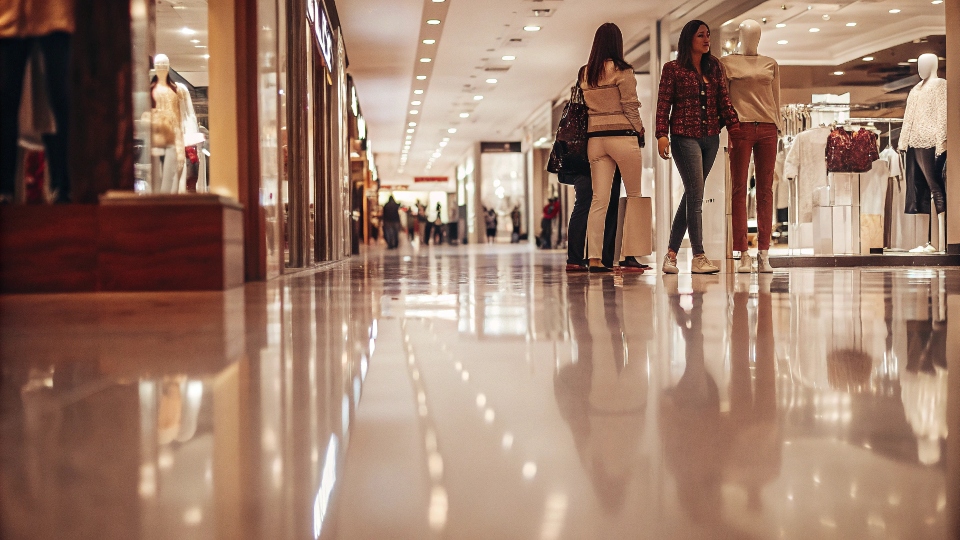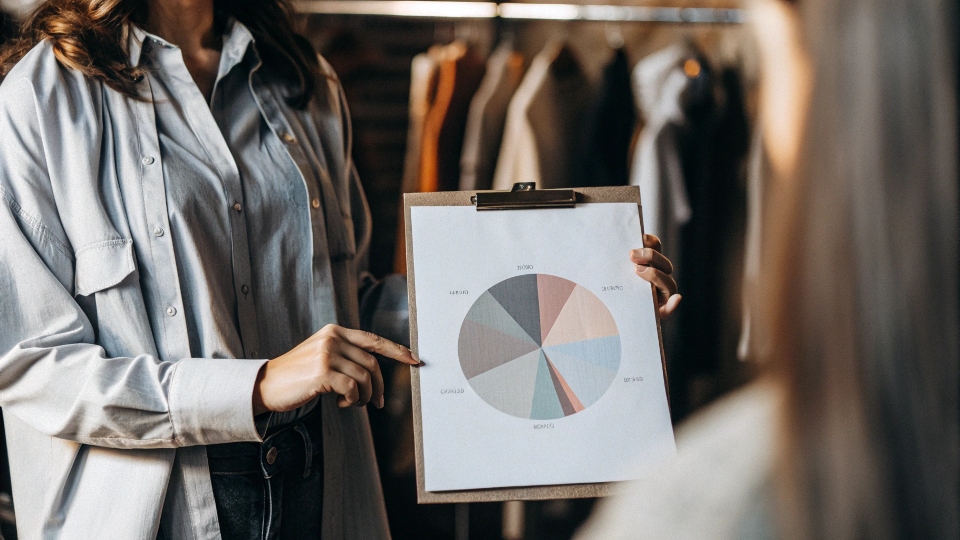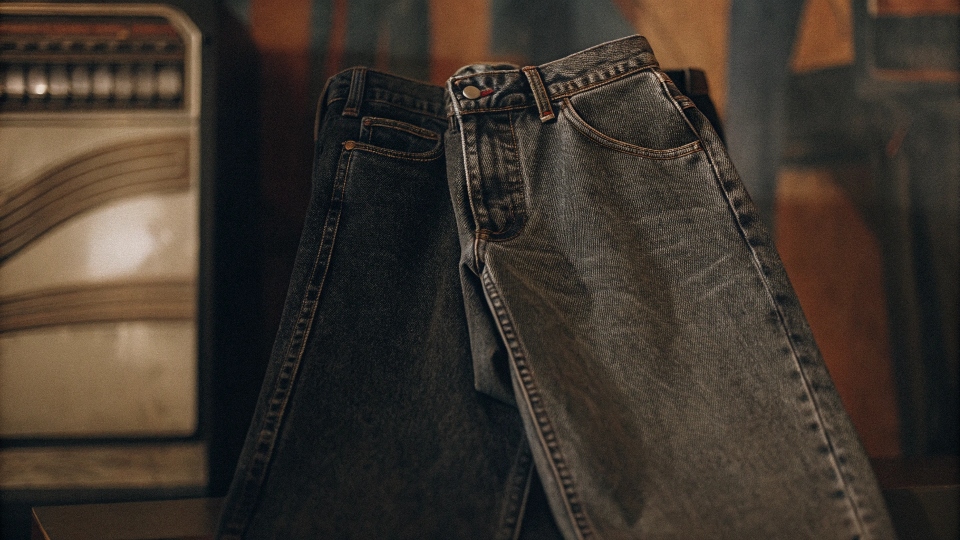You remember the iconic, black and white Guess1 ads and the triangle logo on the back pocket. But in a world of fast fashion, you wonder if the brand is still around or just a fond memory.
Yes, Guess is not only still in business, but it's a massive, multi-billion dollar global fashion empire2. They operate over 1,600 stores in more than 100 countries and remain a major player in the denim and fashion world.
For as long as I've been in the denim business, Guess has been a powerhouse. They completely changed the game in the 1980s. Before Guess, jeans were workwear.
The Marciano brothers turned them into a high-fashion, status symbol3.
Today, from my perspective as a factory owner who watches industry trends, they are a case study in brand longevity4.
They might not have the same cultural dominance as they did in their heyday, but their business is bigger than ever.
They have evolved from a jeans company into a complete lifestyle brand5 that is recognized all over the world.
Are Guess jeans making a comeback?
You see Guess logos popping up again and wonder if it's a retro trend. Is this classic brand from the 80s and 90s suddenly becoming popular again with a new generation?
Guess jeans aren't making a comeback because they never truly left. They have consistently remained a major global brand by adapting their iconic, sexy style to modern trends and powerfully marketing6 to new generations of customers worldwide.
The idea of a "comeback" isn't quite right. What I see is a smart, continuous evolution. In the 80s and 90s, they defined a very specific American look with supermodel-led campaigns.
That image is still incredibly powerful, especially in international markets in Europe and Asia where they have a massive presence. But they haven't stood still.
They've embraced modern marketing by collaborating with current music artists and using social media influencers to reach younger audiences.
They also successfully expanded beyond just jeans into watches, perfumes, and a full range of apparel.
So while you might see a vintage-inspired piece and think of it as a retro comeback, it's really part of a deliberate strategy to leverage their rich history while staying completely current. They are masters of blending their heritage with the now.
Guess: Brand Evolution Not Revival
| Decade | Key Marketing Focus | Brand Position |
|---|---|---|
| 1980s | The original "Guess Girl," iconic black & white ads, movie-star glamour. | The first true "designer" jean; a luxury status symbol. |
| 1990s | Supermodels like Claudia Schiffer and Anna Nicole Smith. | Peak cultural dominance as the sexiest jean brand. |
| 2000s | Expansion into a full lifestyle brand (watches, fragrances, etc.). | A global fashion house, less focused purely on denim. |
| 2020s | Collaborations with artists (J. Balvin), influencer marketing7. | A heritage brand appealing to a new global youth market. |
Who makes Guess jeans?
You see the "Made in..." tag on a pair of jeans and get a small peek into its origin. For a huge brand like Guess, you wonder where and how their famous denim is actually produced.
Guess uses a diversified global sourcing strategy. They design their products in-house, primarily in Los Angeles, but partner with a wide network of third-party manufacturing facilities in countries across the world to produce their garments.
As a factory owner, I understand their model perfectly. It's the standard for any brand of their size. Guess is a publicly traded company with a complex business that includes retail, e-commerce, and licensing.
They don't own all their factories. Owning factories is a completely different business that requires massive capital investment and specialized management.
Instead, they use a model that gives them flexibility and allows them to manage costs effectively. Their teams in the U.S. create the designs, the tech packs, and the quality standards.
Then, their sourcing department finds the best manufacturing partners around the world who can meet those standards at the right price. This means one style of Guess jeans might be made in Mexico, while another is made in Vietnam or Turkey.
This global network is essential for a brand that operates over 1,600 stores worldwide. It allows them to respond to trends quickly and manage a massive, global inventory.
Why are Guess jeans so expensive?
You see the price tag on a new pair of Guess jeans. It's higher than many other brands in the same store. You wonder what exactly you are paying for with that premium price.
The high price of Guess jeans is a result of their brand positioning. You are paying for a powerful brand image built over decades, extensive global marketing, designer-level styling, and the high cost of maintaining hundreds of prime retail stores.
The final price of a garment is about so much more than just the fabric and labor. The raw materials and sewing costs are just one small piece of the puzzle.
For a brand like Guess, a huge portion of the price you pay goes toward building and maintaining the brand's image.
Think about their advertising history—those legendary campaigns are incredibly expensive. Then there is the cost of design and development teams in a high-cost city like Los Angeles.
The biggest factor is often retail overhead. Rent for a store in a major shopping mall is astronomical, plus you have staff salaries and store operations.
All of these costs are built into the price of the jeans. So, when you buy a pair of Guess jeans, you're not just buying a piece of clothing; you're buying into the glamorous, sexy, and adventurous lifestyle they have spent billions of dollars creating over the last 40 years.
| Cost Component | What It Covers | Impact on Price |
|---|---|---|
| Materials & Labor | Denim fabric, thread, hardware, factory wages. | Moderate |
| Design & Development | Designers, pattern makers, sample creation. | Moderate |
| Marketing & Advertising | Global ad campaigns, influencer partnerships, branding. | High |
| Retail & Logistics | Store rent, staff salaries, shipping, warehousing. | High |
| Brand Margin | Profit for the company and its shareholders. | Significant |
How much did Guess jeans cost in 1990?
You remember Guess jeans being a huge status symbol in the 90s. They felt expensive and exclusive. You try to remember what they actually cost back then compared to today's prices.
In the early 1990s, a popular pair of Guess stone-washed or acid-washed jeans typically retailed for between $58 and $70. When adjusted for inflation, this is equivalent to approximately $120 to $165 in today's money.
That $60 price tag was a very big deal in 1990. It firmly placed Guess in the "designer" category, well above the standard Levi's or Lee jeans which might cost half that amount.
This price point was a key part of their marketing strategy. It wasn't just a pair of pants; it was a statement that you were fashionable and had money to spend.
We have to remember the context of the time. The federal minimum wage was only about $4.00 an hour. That meant a pair of Guess jeans could represent more than two full days of work for a young person.
The high cost, combined with their revolutionary advertising and trend-setting washes, is what made them the ultimate must-have item for an entire generation. They weren't just selling denim; they were selling aspiration.
Conclusion
Guess remains a powerful and successful global brand. They have expertly evolved from an 80s denim icon into a complete lifestyle company that continues to sell its signature brand of glamour worldwide.
-
Explore the rich history of Guess, a brand that transformed denim into a fashion statement and continues to thrive globally. ↩
-
Learn about the strategies that help fashion empires like Guess remain relevant and successful in a competitive market. ↩
-
Learn how brands like Guess create status symbols through marketing and product positioning. ↩
-
Understand the key factors that contribute to the longevity of fashion brands like Guess in a fast-changing market. ↩
-
Discover what makes a brand a lifestyle brand and how Guess has successfully transitioned into this category. ↩
-
Find out the marketing strategies that successful fashion brands like Guess use to connect with consumers. ↩
-
Explore the role of influencer marketing in fashion and how brands like Guess leverage it to reach new audiences. ↩











